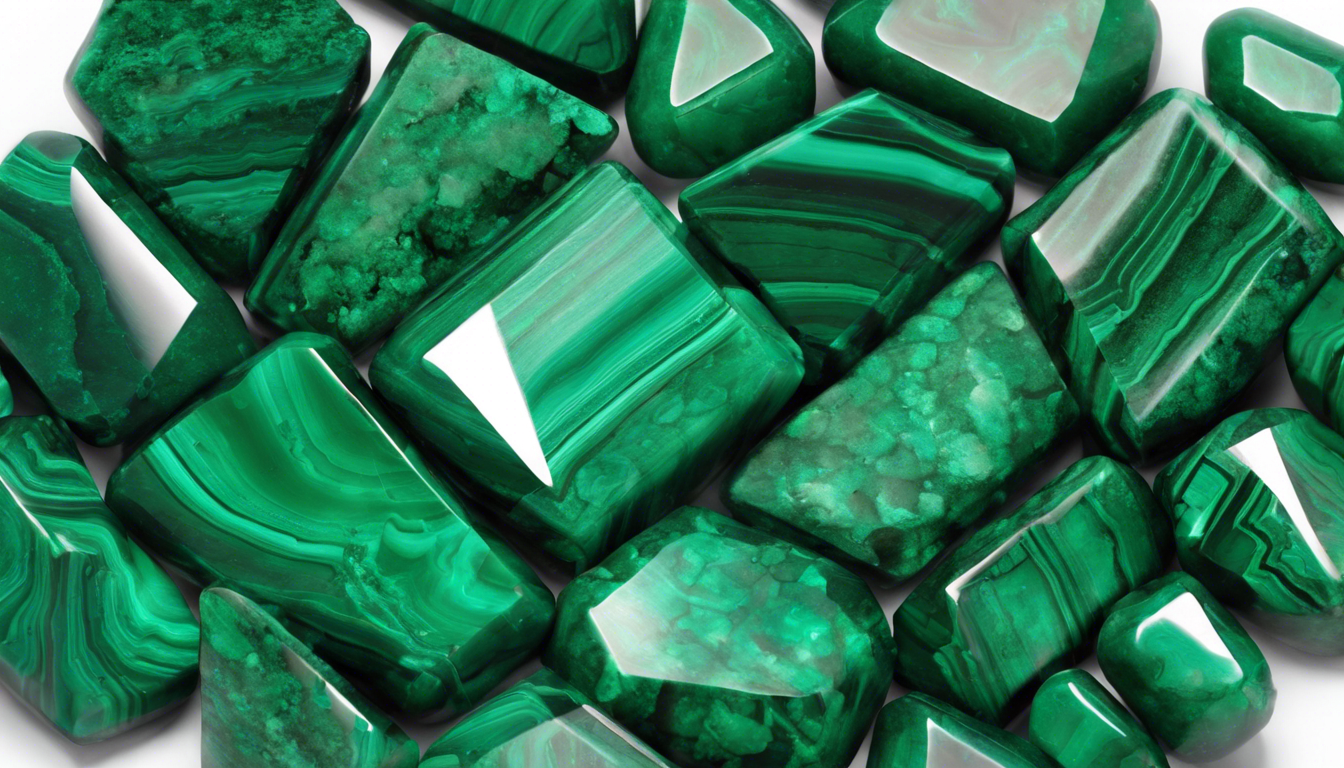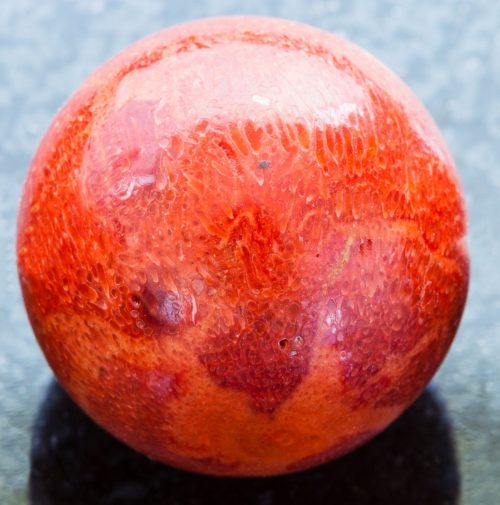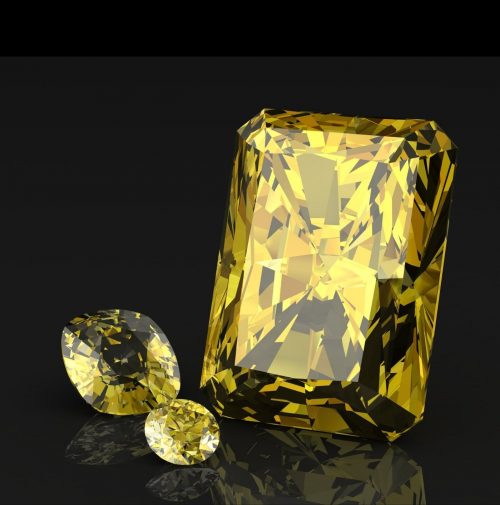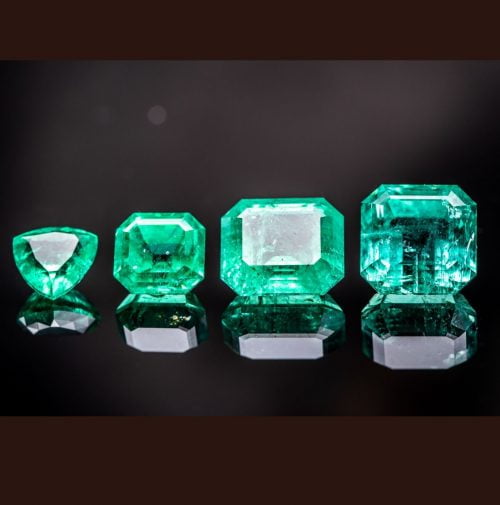Malachite: The Stone of Transformation and Healing

I. Introduction
Malachite, with its mesmerizing bands of green, is a captivating gemstone that has been revered for centuries for its beauty and healing properties. In this blog, we will explore the fascinating world of Malachite, uncovering its history, symbolism, and the many ways it can benefit your life.
History and Symbolism:
Malachite has a rich history dating back to ancient Egypt, where it was prized for its vibrant color and believed to possess powerful healing properties. The ancient Egyptians used Malachite to create intricate jewelry, amulets, and sculptures, believing that it could protect them from negative energies and bring good fortune.
In many cultures, Malachite has been associated with transformation and rebirth. Its green color, reminiscent of nature’s renewal, is believed to symbolize growth, new beginnings, and the cycle of life.
Healing Properties:
Malachite is renowned for its powerful healing properties, both physical and emotional. It is believed to:
- Emotional Healing: Malachite is a powerful emotional healer, helping to release negative emotions such as stress, anxiety, and depression. It promotes emotional balance and encourages self-love and acceptance.
- Physical Healing: Malachite is believed to have a number of physical healing properties, including the ability to reduce inflammation, alleviate pain, and support the immune system. It is often used to treat conditions such as arthritis, joint pain, and muscle cramps.
- Spiritual Healing: Malachite is a powerful spiritual stone, helping to connect you to your higher self and promote spiritual growth. It is believed to enhance intuition, psychic abilities, and spiritual awareness.
A. Definition of Malachite
Malachite is a captivating gemstone known for its vibrant green color and unique patterns. It is a copper carbonate hydroxide mineral that forms in the oxidized zones of copper deposits. Malachite is typically found in botryoidal or stalactitic formations, and its color can range from light green to deep forest green.
B. Significance and Popularity of Gemstones
Gemstones have been prized by humans for centuries for their beauty, rarity, and perceived metaphysical properties. They have been used in jewelry, amulets, and other decorative objects, and have been believed to possess the power to heal, protect, and bring good fortune.
C. Thesis Statement
Malachite is a captivating gemstone that has captured the attention of people around the world for centuries. Its unique green color, coupled with its purported metaphysical properties, has made it a popular choice for jewelry, healing, and spiritual practices.
II. History and Origins of Malachite
A. Early Uses and Cultural Significance
Malachite has been used by humans for thousands of years. Some of the earliest evidence of Malachite use dates back to the Neolithic period, where it was used to create beads and other decorative objects.
In ancient Egypt, Malachite was highly prized for its vibrant green color and was believed to possess powerful healing properties. The ancient Egyptians used Malachite to create jewelry, amulets, and sculptures, and they believed that it could protect them from negative energies and bring good fortune.
Malachite was also prized in other ancient civilizations, such as China, Greece, and Rome. In China, it was believed to promote good luck and prosperity, and was often used to create decorative objects and jewelry. In Greece, Malachite was associated with the goddess Aphrodite, and was believed to enhance beauty and love. In Rome, Malachite was used to create jewelry and other decorative objects, and was believed to have healing properties.
B. Ancient Civilizations that Prized Malachite
- Egypt: The ancient Egyptians were some of the earliest people to use Malachite. They believed that it had powerful healing properties and used it to create jewelry, amulets, and sculptures.
- China: In ancient China, Malachite was believed to promote good luck and prosperity. It was often used to create decorative objects and jewelry.
- Greece: The ancient Greeks associated Malachite with the goddess Aphrodite, and believed that it enhanced beauty and love.
- Rome: The ancient Romans used Malachite to create jewelry and other decorative objects. They believed that it had healing properties.
C. Mining and Production of Malachite
Malachite is a relatively common mineral, and is found in many parts of the world. The largest deposits of Malachite are found in the Ural Mountains of Russia, the Democratic Republic of the Congo, and Zambia.
Malachite is typically mined using open-pit methods. Once the Malachite ore is extracted, it is crushed and processed to remove impurities. The Malachite is then cut and polished into gemstones or used to create other decorative objects.
Malachite has a rich and fascinating history, dating back to ancient times. It has been prized by many cultures for its beauty, rarity, and perceived metaphysical properties. Today, Malachite is still a popular gemstone, used in a variety of jewelry and decorative objects.
III. Physical Characteristics of Malachite
A. Chemical Composition and Crystal Structure
Malachite is a copper carbonate hydroxide mineral with the chemical formula Cu2CO3(OH)2. It crystallizes in the monoclinic crystal system, and typically forms in botryoidal or stalactitic formations.
B. Distinctive Green Color and Variations
Malachite is known for its vibrant green color, which is caused by the presence of copper ions in its crystal structure. The color can range from light green to deep forest green, and is often variegated with darker and lighter shades.
Some Malachite specimens may also exhibit other colors, such as blue or black. This is due to the presence of impurities, such as iron or manganese.
C. Physical Properties such as Hardness and Luster
Malachite has a Mohs hardness of 3.5 to 4, which means that it is relatively soft and can be easily scratched. It has a vitreous to pearly luster, and is opaque to translucent.
Other physical properties of Malachite include:
- Density: 3.9 to 4.0 g/cm³
- Cleavage: Perfect in one direction
- Fracture: Conchoidal
- Streak: Light green
Malachite is a beautiful and distinctive gemstone with a number of unique physical characteristics. Its vibrant green color, coupled with its relatively soft hardness and vitreous to pearly luster, make it a popular choice for jewelry and other decorative objects.
IV. Metaphysical Properties and Symbolism
A. Healing Properties Associated with Malachite
Malachite is also believed to have a number of physical healing properties. It is said to reduce inflammation, alleviate pain, and support the immune system. It is often used to treat conditions such as arthritis, joint pain, and muscle cramps.
Malachite is believed to possess a number of healing properties, both physical and emotional. Some of the most common healing properties associated with Malachite include:
- Physical Healing: Malachite is believed to be beneficial for a variety of physical ailments, including arthritis, joint pain, muscle cramps, and inflammation. It is also believed to support the immune system and promote overall health and well-being.
- Emotional Healing: Malachite is believed to be a powerful emotional healer. It is said to help release negative emotions such as stress, anxiety, and depression. It is also believed to promote emotional balance and encourage self-love and acceptance.
B. Spiritual and Emotional Benefits
Malachite is a powerful spiritual stone. It is believed to help connect you to your higher self and promote spiritual growth. It is also believed to enhance intuition, psychic abilities, and spiritual awareness.
Malachite is believed to be a powerful emotional healer. It is said to help release negative emotions such as stress, anxiety, and depression. It is also believed to promote emotional balance and encourage self-love and acceptance.
In addition to its healing properties, Malachite is also believed to offer a number of spiritual and emotional benefits. Some of these benefits include:
- Spiritual Growth: Malachite is believed to help connect you to your higher self and promote spiritual growth. It is also believed to enhance intuition, psychic abilities, and spiritual awareness.
- Emotional Balance: Malachite is believed to help promote emotional balance and stability. It is said to help you to let go of negative emotions and to embrace positive ones.
- Self-Love and Acceptance: Malachite is believed to help you to develop self-love and acceptance. It is said to help you to see yourself in a positive light and to appreciate your unique gifts and talents.
C. Symbolism of Malachite in Different Cultures
Malachite has been used as a symbol in a number of different cultures throughout history. Some of the most common symbolic meanings associated with Malachite include:
- Ancient Egypt: In ancient Egypt, Malachite was associated with the goddess Hathor, who was the goddess of love, beauty, and music. Malachite was also believed to be a powerful protective stone.
- China: In China, Malachite is believed to be a symbol of good luck and prosperity. It is often used in feng shui to attract positive energy and to promote wealth and abundance.
- Native American Cultures: In some Native American cultures, Malachite is believed to be a sacred stone that represents the Earth and its healing powers. It is often used in ceremonies and rituals to promote healing and to connect with the natural world.
Malachite is a powerful and versatile gemstone that is believed to offer a number of healing, spiritual, and emotional benefits. Its vibrant green color and unique patterns make it a popular choice for jewelry, meditation, and other spiritual practices.
V. Uses and Applications of Malachite
There are many ways to incorporate Malachite into your life and experience its benefits. Here are a few suggestions:
- Jewelry: Wearing Malachite jewelry is a great way to keep the gemstone close to your body and benefit from its healing energies throughout the day.
- Meditation: Hold a piece of Malachite in your hand or place it on your third eye chakra during meditation to promote deep relaxation, emotional healing, and spiritual connection.
- Home Decor: Display Malachite in your home or office to create a calming and harmonious environment. It is believed to absorb negative energies and promote positive vibes.
A. Jewelry and Decorative Purposes
Malachite is a popular gemstone that is used in a variety of jewelry and decorative objects. Its vibrant green color and unique patterns make it a striking and eye-catching material.
Some of the most common uses of Malachite in jewelry include:
- Rings
- Necklaces
- Earrings
- Bracelets
- Pendants
Malachite is also used to create a variety of decorative objects, such as:
- Figurines
- Sculptures
- Vases
- Boxes
- Inlaid furniture
B. Historical and Modern Uses in Art and Architecture
Malachite has been used in art and architecture for centuries. Some of the most famous examples of Malachite in art include:
- The Malachite Room in the Winter Palace in St. Petersburg, Russia
- The Malachite Madonna in the Uffizi Gallery in Florence, Italy
- The Malachite Vase in the Hermitage Museum in St. Petersburg, Russia
In modern times, Malachite is still used in art and architecture, although it is less common than it once was. Some contemporary artists who have used Malachite in their work include:
- Anish Kapoor
- Damien Hirst
- Jeff Koons
C. Practical Applications in Technology and Industry
In addition to its use in jewelry, decorative objects, and art, Malachite also has a number of practical applications in technology and industry.
- Pigments: Malachite has been used as a green pigment since ancient times. It is still used today in a variety of paints, dyes, and inks.
- Corrosion inhibitor: Malachite is used as a corrosion inhibitor in a variety of industrial applications, such as the protection of metal pipes and tanks.
- Fire retardant: Malachite is also used as a fire retardant in a variety of materials, such as plastics and textiles.
Malachite is a versatile and valuable material that has been used for centuries in a variety of applications. Its beauty, durability, and unique properties make it a popular choice for jewelry, decorative objects, art, architecture, and technology.
VI. Mining and Sustainability
A. Environmental Impact of Malachite Mining
Malachite mining can have a number of negative environmental impacts, including:
- Habitat destruction: Malachite mining often requires the removal of large amounts of vegetation and topsoil, which can destroy wildlife habitat and lead to soil erosion.
- Water pollution: Mining activities can also pollute water sources with sediment, chemicals, and heavy metals. This can harm aquatic life and make water unsafe for drinking or irrigation.
- Air pollution: Mining operations can also release dust and other pollutants into the air, which can contribute to respiratory problems and other health issues.
B. Responsible Mining Practices and Initiatives
There are a number of responsible mining practices and initiatives that can help to reduce the environmental impact of Malachite mining. These include:
- Minimizing the footprint of mining operations: Mining companies can reduce their environmental impact by minimizing the amount of land they disturb and by using efficient mining methods.
- Reclamation of mined land: Mining companies can also help to reduce their environmental impact by reclaiming mined land and restoring it to its natural state.
- Reducing water and energy use: Mining companies can also reduce their environmental impact by reducing their water and energy use.
- Using sustainable mining methods: Mining companies can also use sustainable mining methods, such as solar and wind power, to reduce their environmental impact.
C. Alternatives to Mined Malachite
There are a number of alternatives to mined Malachite that can be used in jewelry, decorative objects, and other applications. These alternatives include:
- Synthetic Malachite: Synthetic Malachite is a man-made material that is chemically and physically identical to natural Malachite. It is a more sustainable alternative to mined Malachite because it does not require the destruction of natural habitats or the release of pollutants into the environment.
- Lab-grown Malachite: Lab-grown Malachite is another sustainable alternative to mined Malachite. It is grown in a laboratory using a process that mimics the natural formation of Malachite. Lab-grown Malachite is chemically and physically identical to natural Malachite, but it does not require the destruction of natural habitats or the release of pollutants into the environment.
- Recycled Malachite: Recycled Malachite is another sustainable alternative to mined Malachite. It is made from Malachite that has been collected from old jewelry, decorative objects, and other products. Recycled Malachite does not require the destruction of natural habitats or the release of pollutants into the environment.
Malachite mining can have a number of negative environmental impacts, but there are a number of responsible mining practices and initiatives that can help to reduce these impacts. There are also a number of alternatives to mined Malachite that can be used in jewelry, decorative objects, and other applications.
General FAQs for Malachite
What is Malachite?
Malachite is a copper carbonate mineral with the chemical formula Cu2CO3(OH)2. It is a secondary mineral that is formed in the oxidation zone of copper deposits. Malachite is typically found in massive or botryoidal form, and it has a vibrant green color that is often banded or mottled.
Where is Malachite found?
Malachite is found in many parts of the world, but the most significant deposits are located in the Ural Mountains of Russia, the Democratic Republic of the Congo, and Zambia.
What is Malachite used for?
Malachite is a popular gemstone that is used in a variety of jewelry and decorative objects. It is also used as a pigment in paints, dyes, and inks. Malachite has a number of practical applications in technology and industry, such as a corrosion inhibitor and a fire retardant.
What are the benefits of Malachite?
Malachite is said to have a number of metaphysical properties, including:
- Healing: Malachite is said to be a powerful healing stone that can help to heal physical and emotional wounds.
- Protection: Malachite is also said to be a protective stone that can help to shield the wearer from negative energy.
- Transformation: Malachite is said to be a stone of transformation that can help the wearer to change their life for the better.
What are the different types of Malachite?
There are a number of different types of Malachite, including:
- Botryoidal Malachite: This type of Malachite is characterized by its grape-like or cauliflower-like shape.
- Massive Malachite: This type of Malachite is found in large, solid masses.
- Stalactitic Malachite: This type of Malachite is found in the form of stalactites, which are long, thin columns that hang from the ceiling of caves.
- Pseudomorphic Malachite: This type of Malachite is formed when Malachite replaces another mineral, such as Azurite.
What is the value of Malachite?
The value of Malachite varies depending on a number of factors, including the size, color, and quality of the stone. A high-quality Malachite gemstone can be worth several hundred dollars per carat.
How to care for Malachite?
Malachite is a relatively soft stone, so it is important to take care of it properly. Malachite should be cleaned with a soft cloth and mild soap. It should not be exposed to harsh chemicals or extreme heat.
Malachite is a beautiful and versatile gemstone with a long history of use in jewelry, decorative objects, and art. It is also said to have a number of metaphysical properties. Malachite is a relatively affordable gemstone, and it is easy to care for.
Conclusion
Malachite is a powerful gemstone with a number of metaphysical properties that can benefit the wearer. It is said to be a healing stone, a protective stone, and a stone of transformation. Malachite can help the wearer to heal physical and emotional wounds, to shield themselves from negative energy, and to change their life for the better.
If you are interested in learning more about Malachite and how it can benefit you, I encourage you to contact me for an astrological consultation. I can help you to choose the right Malachite gemstone for your needs and to learn how to use it to get the most benefits from it.
My name is Musa, and I am a modern astrologer and gemologist. I have been practicing this ancient hidden secret like the Egyptians and have created my own reality. I also help people to have a better life.
My company name is 360 Real Astrology. You can find more information about me and my services on my website: https://360realastrology.com/.
I look forward to hearing from you and helping you to unlock the power of Malachite.
Call to Action:
If you are looking for a gemstone that can help you to transform your life, Malachite is an excellent choice. Visit our website today to explore our collection of beautiful Malachite jewelry and gemstones.
Contact me today to schedule your astrological consultation and learn more about how Malachite can benefit you. I can help you to choose the right Malachite gemstone for your needs and to learn how to use it to get the most benefits from it.
Visit my website: https://360realastrology.com/
Email me: musa@360realastrology.com








Connect me